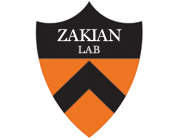Properties of the transcriptional enhancer in Saccharomyces cerevisiae telomeres.
Publication Year
1990
Type
Journal Article
Abstract
Saccharomyces cerevisiae chromosomes end with the sequence C2-3A(CA)1-4, commonly abbreviated as C1-3A. These sequences can function as upstream activators of transcription (UAS's) when placed in front of a CYC1-lacZ fusion gene. When C1-3A sequences are placed between the GAL1,10 UAS and the CYC1-lacZ fusion, the C1-3A UAS still functions and the amount of beta-galactosidase produced in cells grown on glucose is as much or more than that for cells grown on either glycerol medium, or cells grown on glucose medium containing a plasmid with just the C1-3A UAS. These data indicate that the UAS is immune from glucose repression from the upstream GAL1,10 UAS. Because C1-3A sequences are bound in vitro by the transcription factor RAP1, the UAS activity of yeast telomere sequences was compared with that of a similar UAS from the tightly regulated ribosomal protein gene RP39A, which also contains a RAP1 binding site. While transcription from the ribosomal protein gene UAS was responsive to cell density, the amount of transcription from the C1-3A UAS was nearly the same at all cell densities tested. These data show that the transcriptional activation by C1-3A sequences is not regulated by cell density.
Keywords
Journal
Nucleic Acids Res
Volume
18
Issue
7
Pages
1783-7
Date Published
04/1990
ISSN Number
0305-1048
Alternate Journal
Nucleic Acids Res.
PMID
2110655

